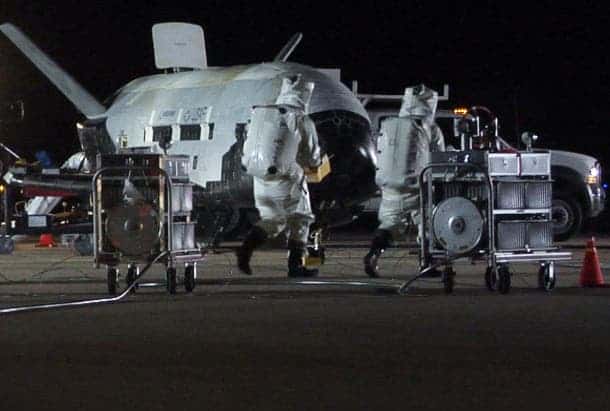
Orbital Test Vehicle-1, sister ship to the X-37B, returning home from a test flight in Dec. 3, 2010. Credit: U.S. Air Force
As a somewhat interesting story, I’ve just read on SpaceWeather that the new sub-orbital pseudo-shuttle military space plane, the X-37B, has been spotted on the sky by various astronomers around the US as its surface shined above the stratosphere. I’ve tried to inquire and find out what’s the purpose of the X-37B’s just recent circling of the Earth, but apparently its mission is highly classified.
“I saw the X-37B from my home in Pasadena, California, around sunrise on March 31st,” reports Anthony Cook of the Griffith Observatory. “The spacecraft’s appearance was remarkable. When overhead it was a little brighter than a 2nd magnitude star with a slight yellow hue. Then it flared. As the X-37B moved toward the horizon it became silvery and brightened to around magnitude -6, far outshining Venus below it.”
The X-37B is a robotic spaceplane (unmanned) which is used by the US Airforce for sub-orbital and orbital missions, like satellite maintenance or refueling and such. There’s actually been a scandal related to the X-37B recently when Chinese officials accused the Pentagon of delivering weapon in space via the spaceplane, which in term were firmly denied. It’s curious and funny at the same time that such a classified, billion dollar spaceplane can be so easily spotted and tracked even by simple amateur astronomers.









